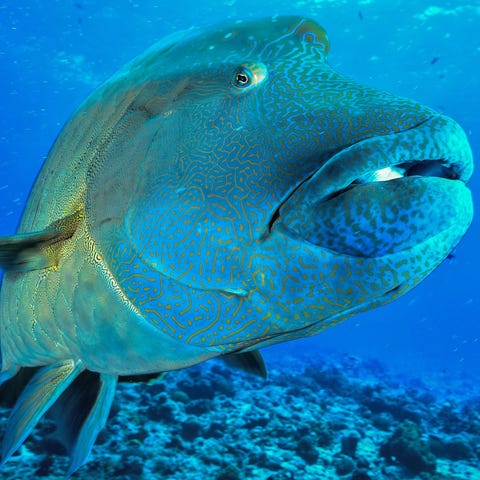Endangered Species - Humphead Wrasse
 Humphead Wrasse
Humphead WrasseDescription and Habitat
The Humphead Wrasse is located in the Indo-Pacific around the coral reefs. This fish grows to around six feet long weighing over 400 pounds. They can live peacefully for 30 years, sometimes longer. This fish is typically seen out because of the big lump that stands straight on their forehead.
Something interesting about this fish is that they start their lives as females but can sometimes transform into males later in life.
They predict that only 890 of these fish are left in the sea, numbers increasing daily.
 This picture shows you how giant these fish can be compared to a normal human.
This picture shows you how giant these fish can be compared to a normal human.Species Role in Ecosystem
These fish play a very important role in the ecosystem, they help keep the coral reef together. These fish are immune to the spikes of crown thorn starfish, that are known to be poisonous to the species within the coral reef, including the coral. If we continue to see a decline of these fish, the coral reef could be at a higher risk than it already is at.
Cause of Decline
Fisherman, poachers and pollution to our ocean are the biggest cause of decline. Cyanide fishing is the biggest threat. They are being ate but also being sold to aquariums within an illegal market.

Current Conservation Efforts
People have been contacting officials in the Coral Triangle to change to stop the trade of these fish. Also people around the world continue to help save the coral reef by cleaning beaches and limiting trash.
How to Help?!
1. Inform yourself on the rules and regulations of fish trade! (I had no idea before!)
2. Donate to worldwide coral reef conservation organizations
3. Continue to practice recycling and do not litter!
4. Get in contact with officials of the Coral Triangle to change the trading regulations!
5. Donate to the National Aquarium!
Comments
Post a Comment